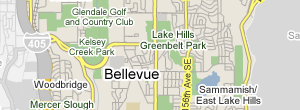Blog
Distressed Inventory Report
It looks that the servicers are starting to get more active. The numbers are up for foreclosures and NTS. This is the firt “spike” that I have seen. The last weeks since the first of the year the numbers had been treading water going up or down a little bit. This week definetly is the first big uptick. Since the first of the year I had been hearing from the a couple of the trustee servicers; these are the guys who actually do the sale; were saying that there was more volume coming down the pipeline. The issue was a lot of foreclosures were being deferred because of the new Washington State law which requires the lenders to show a good faith effort to contact the borrower and make a good faith effort to seek an alternative to foreclosure. This requirement has added a 30 days to the process. It now takes a minimum time of 220 to foreclose after the initial default. Many situations are stretching to a year or more after the initial defalut. A property that has had its Notice of Trustee Sale posted has already been through the process since the sale date had already been set.
What is interesting is that a survey of most of the inventory shows that a great majority of the foreclosures are at the lower end of the price range no matter what the area. There is very little new construction since maost of that inventory left has been foreclosed and sold and there is no replacement inventory being built. In vestors looking for rentals or someone looking who is willing to put some effort into fixing up a bank owned or short sale property looks like they will have some opportunity.
The spreadsheet is here: Bellevue Foreclosure Report 4-3-10
Tags: Bellevue Homes, foreclosure, inventory, notice of trustee sale, NTS
Discussion: No Comments
Weekly Scorecard 3-29-10
Sales are staying fairly steady but inventories appear to be creeping up. South Bellevue has gone from 308 homes to 366 homes. East Bellevue in February bottomed at 211 homes and now has 248 homes listed. West Bellevue went from a low 192 homes and is now at 210 homes. This is typical action for the spring where new inventory is often brought to the market. The sales are staying steady but as inventories go up the volumes should also gradually rise as a general trend through the end of May but as we have seen nothing has been typical about this market for the last two years.
Here is the spreadsheet: Weekly scorecard 3-29-10
Tags: Bellevue Homes, inventory, pendings, sales
Discussion: No Comments
Distressed Inventory Report 3-27-10
Treading water and churning a little bit. 98005 saw a jump with four new NTS occuring this week. There havn’t been jumps like this since last summer. However overall East Bellevue and West Bellevue was up a little bit but South Bellevue was down two homes overall. Need to see the trends over the next couple of weeks to se if this a plateau or a base.
Here is the spreadsheet: Bellevue Foreclosure Report 3-27-10
Tags: Bellevue Homes, Distressed Inventory, foreclosure, notice of trustee sale
Discussion: No Comments
Weekly Scorecard 3-22-10
Well it finally started happening. The inventories have started to increase. Sale remain at pretty good levels but at some point in time with sales volume remaining fairly brisk new inventory needed to be brought to the market.
Also of note this week the upperend seems to be coming back to life. So far this month two waterfront homes have sold on the point. One for over $7,000,000 and one for over $11,000,000. In addition a survey of the individual sales shows that properties are being purchased for building it looks like the tear down cycle is starting again.
The spreadsheet is here: Weekly scorecard 3-22-10
Tags: Bellevue Homes, pendings, Solds
Discussion: No Comments
Distressed Inventory Report 3-20-10
The character of things changed a little bit this week. Overall the amount of distressed inventory is down slightly with the amount of foreclosed homes being down overall. However the notice of trustee sales is up in certain areas: 98008, 98004 and 98006. Also the amount of listed distressed inventory continues to rise both foreclosed and short sale. This is good news to get this inventory on the market. Presently it looks like the sale of homes is about even with those coming on. Looks like the passengers on the boat are able to bail water about as fast as it is coming in.
Here is the apreadsheet: Bellevue Foreclosure Report 3-20-10
Tags: Bellevue Homes, Distressed Inventory, foreclosure, Short Sale, Weekly
Discussion: No Comments
TARP
There have been a couple of comments sent to me stating that Frontier never took TARP funds. That is correct. They did apply for funds but as far as I know never received them. On the other hand Washington Federal did take TARP funds and has repaid them back. On reviewing my last Post I can see the confusion caused. My rant regarding TARP comingled with my comments regarding Frontier’s condition can imply that Fronteir took TARP funds and that it was part of the cause of the present situation. That is not the case. Here is the link to what I know about the situation regarding TARP and Frontier.
http://seattle.bizjournals.com/seattle/stories/2008/11/10/daily21.html
Here is my point regarding TARP and the overall November 2008 legislation that had a lot of new regulatory rules as a result. First the overall legeslation was very damaging to the regional banks since elements of the TARP legislation and ancillary legislation did not allow banks to advance funds to a borrower in default. This precluded work outs with assets that were partially completed which only further hammered the value causing massive write downs which starved both banks and borroers of their capital. In past down turns banks would work with trustworthy borrowers who had depeleted funds but would usually direct pay subs to get either homes or subdivisions completed so their full asset potential could be realized under the terms of the loan. The FDIC interpreted under the new guide lines interpreted this as “enriching the borrower”. The second element of the November 2008 legislation that really caused things to spiral downward was that banks were not allowed to engage in “risky lending”, i.e. real estate development loans. This took away the second work out tool which was to sell assets from weak borrowers to financially stronger borrowers or to finance finance foreclosed assets. Basically the FDIC wants the regionals out of the real estate lending business. They wanted their risky assets reduced, regardless of the quality of the borrower. If for example you received a subdivision back what I used to see happen is the bank would take a write down and then resell the asset to a new financially stronger borrower. This in essence was a back door capital raise since the borrower reduced the bank’s exposure by placing a large downpayment in the deal and then finaincing would be supplied for the balance. This allowed the bank to receive income in addition to the equity placed in the deal which allowed an income stream to offset future losses.
The problem with some of our regionals is that a lot of their business was real estate based lending. They now have to fill that profit pipeline with a very competitive retail lending environment. These banks were not set up to be retails banks they were community banks who were supposed to lend to local small businesses, their business model was jerked out from under them. They are now in a position of being forced to take massive write downs on these assets and no way of generating income to offset the losses. The money center banks have a deep pool of retail banking income to offset losses in other segments. Look at Wells Fargo as an example. The argument from the regulators and other parties is many regionals do not have the capital to lend; in my opinion a lot of the reason for that is because of the requirements discussed above which starved their capital and cut off their source of income. The other problem with TARP is that it took the emphasis of capital raising and made the government the first resort not the last resort.
Now some regionals would fail no matter how much money they have because they didn’t do good underwriting and were fee driven to excess. However I beleive a bank like Frontier left to the more normal and customary past ways may would be in much better shape than having been put in a straight jacket. They have basically good loan officers at the street level who understood the game but the rules were changed on them and they were not allowed to work out of their troubled in an orderly manner. There are many small businesses and employess who are dependent on these banks and the loss of these insitutions will only make things worse. If you are a surviving small business owner your only alternative will be an 800 number at Chase which will set you up on a line with credit card interest rates.
Tags:
Discussion: No Comments


